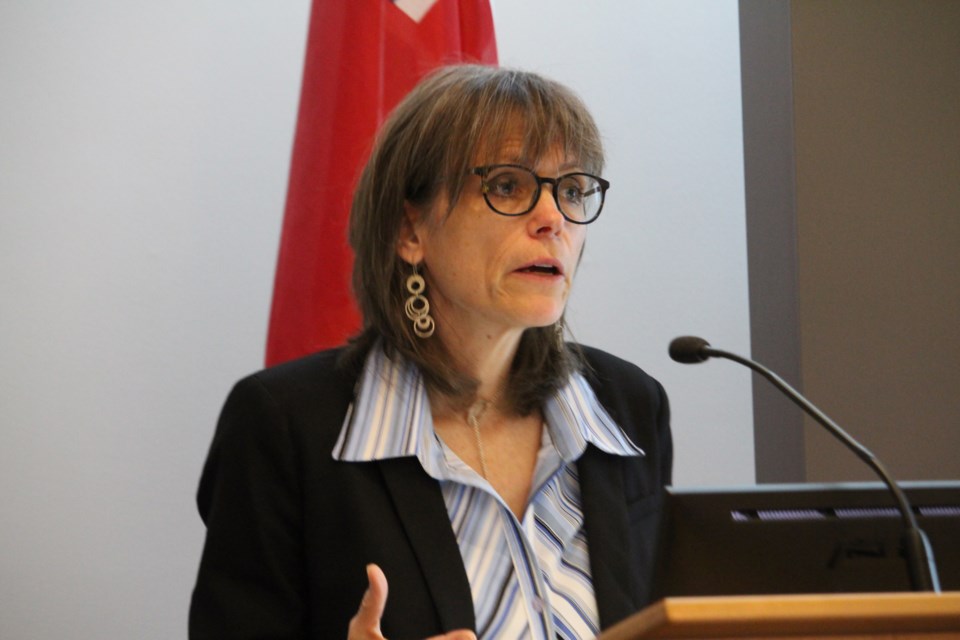Sweeping changes to Ontario's public health system are imminent and officials at Public Health Sudbury and Districts (PHSD) are now looking at the scope of their organization through the lens of before and after April 11.
The day that Doug Ford announced his first budget as Ontario premier, it was made clear that there would be changes coming to the structure of public health in the province, specifically cutting the 35 public health units down to 10.
In Northern Ontario, there are two proposed health units:
Region 9: Nipissing (part of Renfrew), Muskoka (part of Simcoe-Muskoka District Health Unit), North Bay Parry Sound, Sudbury, Algoma, Timiskaming, Porcupine
Region 10: Thunder Bay, Northwestern Health Unit
The PHSD board met on May 16 and voted in favour of endorsing the position of the Simcoe-Muskoka District Health Unit, who voted last week that the organization of their public health services remains intact as they transition to a new public health entity.
The SDMHU board has made it known that they would prefer to be merged into the York region health district, not the Northeast district, under the newly proposed boundaries and PHSD has endorsed their preference.
"The proposed northeast public health entity is a massive area (402,489 km²) with significant administrative and geographic complexities," read the motion passed by the PHSD. "The incorporation of an additional distinct area would tax the region's ability to respond appropriately to diverse public health needs."
During a nearly hour-long presentation during PHSD's board meeting Thursday, the orgnazation's medical officer of health, Dr. Penny Sutcliffe ran through the history of public health in the province, while stressing the importance of ensuring that this transition is a successful one.
"We don't have a choice, we're here now and this is happening," said Sutcliffe. "When we get public health wrong, bad things happen, this is a critical opportunity to create the future of public health in Northeastern Ontario."
Cutting the number of health units in the province by more than half is just one of the changes coming for public health, as the funding model will also be changed to a fixed 70:30 split between the province and the municipality. Sutcliffe estimates that this will mean an annual loss of $1.2 million for Public Health Sudbury and Districts compared with 2018.
"This loss won't be absorbed this year, we have mitigation funds to account for that," said Sutcliffe. "It's not just about the merger of existing agencies, it really is the idea of creating 10 new agencies that would have to function differently because they will have a smaller funding envelope in the regions."
The Ontario budget also indicated that there will be a $200-million cut from public health across the province by 2021-2022.
"That is anticipated to be found via the funding formula change," said Sutcliffe. "So ostensibly there's more responsibility on the part of the municipalities at large across the province because of that decision."
Under the proposed merger, Sudbury's health unit will be joined by Nipissing, North Bay Parry Sound, Algoma, Timiskaming, Porcupine and potentially Muskoka to form the Northeast region.
Boundaries and what health units are assigned where is still up for consultation, but while many health units across the province may feel as if their feet have been put to the fire, Sutcliffe says that Sudbury and the northeast have a head start on the process.
Public Health Sudbury and Districts has been working collaboratively with other health units in the region since November 2017.
"I think we absolutely are (ahead of the curve), some of that work, and it may sound basic, but has been to better understand each other and what we're doing, how we're organized, our programs and services, and to get all that information together and develop trust, which is not a small task," said Sutcliffe.
"Figuring out how to work together and not feel threatened is really an important baseline. Prior to this budget announcement, as of January we had collectively hired a project manager to form the working group, to roll up sleeves and actually put all those good ideas into action. So the fundamental groundwork has been done, the trust is there, and understanding what we do and how we do it and identifying where the opportunities are to do things better together."
With a strong working relationship in place, Sutcliffe says the focus now needs to be on how they adjust to these changes and how to best deliver public health moving forward, rather than looking at things from a "who goes where" perspective.
"We need people to not be thinking about bricks and mortar and head offices and that kind of thing," said Sutcliffe. "First off it's looking at the functions, what are regional functions, local functions, then ultimately to look at our existing assets and the needs of our population and then make business cases about how we would best support that, and then what is the structure, what are the processes that need to be in place."
Ontario's previous government had bandied about the idea of merging health units, from 35 down to 14, one per Local Health Integration Network (LHIN) but it never came to fruition. The mere mention of the possibility of merging health units however was a blessing for PHSD, as it was largely what prompted them to start working collaboratively with its neighbouring health units.
"We certainly didn't anticipate this but in fairness the previous government did reccommend this and if that happened it would have been the five of us again," said Sutcliffe. "Now this is no longer a theoretical, and we better make sure we get ready; this is happening so we need to make sure that we rise to the occasion and do our best."
